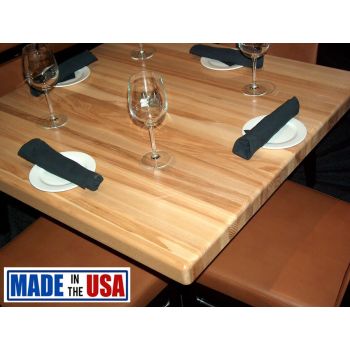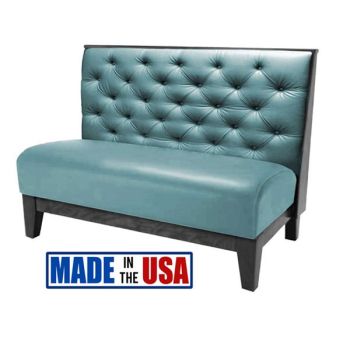As a restaurant owner, you thrive to offer an indulging experience for your guests. As you might have figured out by now, every little detail in your restaurant can significantly alter your guests’ impression. From service to the ambiance at your restaurant, from restaurant furniture to food, a memorable dining experience depends on several aspects. In this regard, your restaurant tables, being the highlight of the dining room, have tremendous power. Therefore, you must select the tables in your restaurant with utmost diligence.
Apart from the obvious functionality, affordability, comfort, durability, etc., requirements, there are design considerations as well. The aesthetic design and visual appearance of the table must gel with the overall ambiance of your restaurant. Excel in all these aspects, and you can offer a complete dining experience for your guests. Read on to about types of restaurant tables, their materials, restaurant table sizes & shapes, and how to make the most of them:
What are the Types of Restaurant Tables?
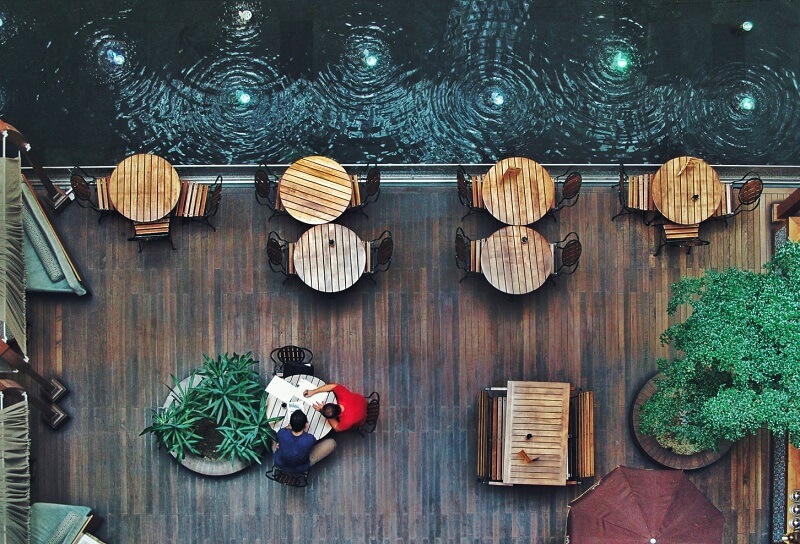
1. Two to four-person tables
Perhaps the most common restaurant table, two to four-person tables have two parts – base and the tabletop. While the table bases are usually made of metal, tabletops come in various finishes like marbles, granite, wood, laminate, resin, etc. Square or rectangular and circular are the most common shapes for two to four-person tables at restaurants.
2. Bar height tables
Originally bar tables were meant to accommodate the guests as they waited for their tables to open up. However, bar tables have evolved to be a preferred choice for many restaurant customers over time. Bar tables provide an interactive, relaxed seating option for a personalized dining experience. Many customers now choose to avoid the wait at some restaurants and dine in the bar area using the comfortable bar height barstools and tables.
3. Restaurant Booths
The classic booth and table seating option are highly sought-after. For the customers, booths offer comfort, privacy, coziness, and extra legroom. Restaurant booths help utilize the corners to maximize the seating capacity and cause minimum disturbance to the customers. While they might not be the most affordable option in initial cost, booths are space-efficient and save money in the long run for restaurant owners. So, it is a win-win situation.
4. Family dining tables
At family diners or banquet halls, family dining tables that can accommodate large gatherings are suitable. Often made in a circular or rectangular shape, family dining tables can seat 8 to 10 guests. Many restaurants use these tables in a separate section for large groups.
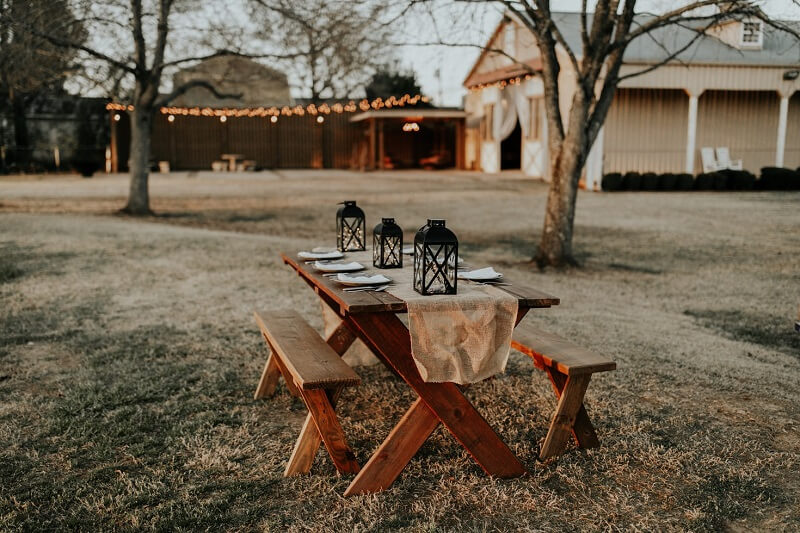
5. Outdoor tables
Outdoor seating in your restaurant can be highly beneficial. It allows your customers to bask in nature’s glory and have a memorable dining experience. Also, it generates additional revenue by being able to seat guests outdoors as well as in your dining room. From aluminum to wicker, from wrought iron to wicker, you have endless material options for outdoor restaurant tables. These commercial-grade tables, with a protective coating, can withstand extreme weather conditions.
What Are The Common Restaurant Table Shapes?
All restaurant tables sizes fall into any of the following two categories – round and rectangular or square. Each of them has some advantages, and selecting a particular shape depends on your personal preference, restaurant’s layout, and your requirements.
- Square or Rectangular Restaurant Tables: From banquets to family dinners, rectangular or square restaurant tables are work well for any occasion. These tables can fill any dining space perfectly and symmetrically. You can place them against a wall or place them together to modify your restaurant’s layout to accommodate different seating groups and events. Square tables are perfect for hosting large gatherings in a lesser space. In a nutshell, they are practical, comfortable, and functional.
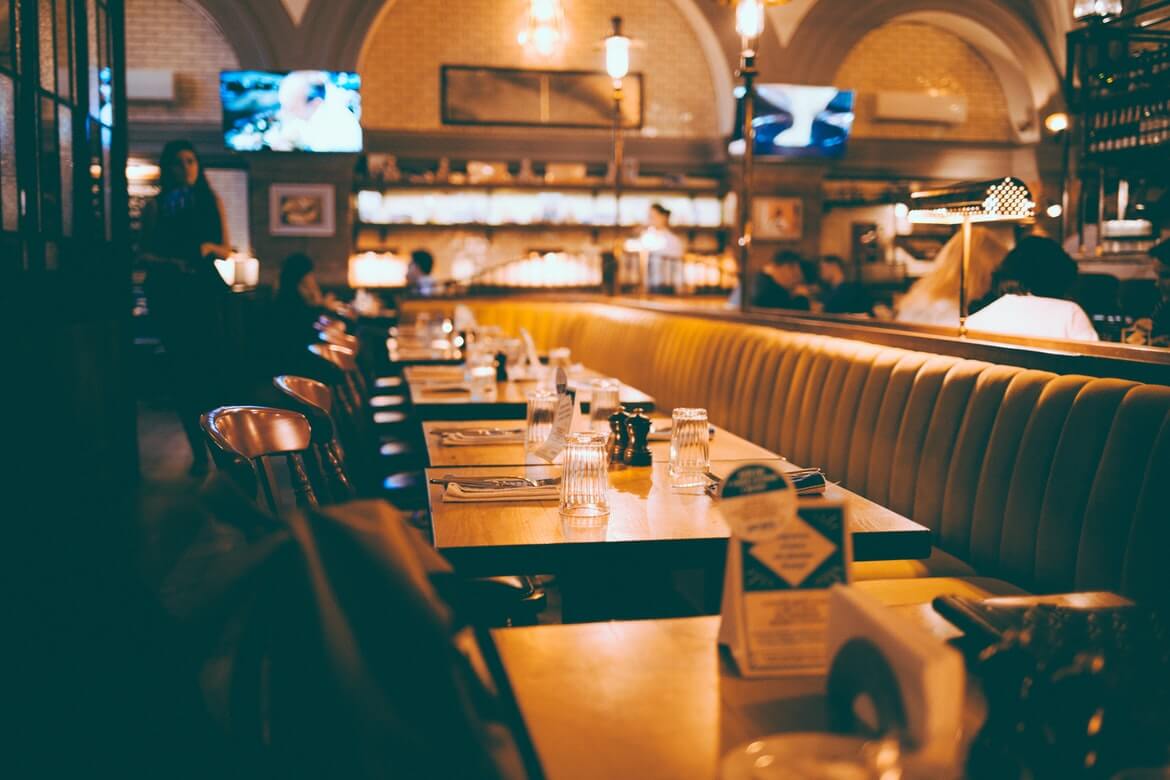
- Round Restaurant Tables: A round table can be the centerpiece design element of your restaurant. Moreover, as your guests face each other, it allows them to engage and socialize. Additionally, round tables can offer more leg room and a larger seating capacity per table. As these tables does not have any corners, they can be used safely for any family restaurants with kids. All in all, round table tops are perfect for a get-together with friends or family.
What Are The Restaurant Tables Made Of?
1. Wood (Hardwood Restaurant Tables)
Wooden dining tables have a vintage look and old-world charm that light up any ambiance. The versatile wooden restaurant tables are available in hardwood, softwood, or a mixture of both. Hardwoods like Oak, Maple, Cherry, Walnut, Mahogany, etc., are more suitable for commercial dining tables as they are durable and last long. Laminated table tops have extra shining, while treated wooden tables provide a rustic look.
2. Granite (Black Galaxy and Tan/Brown Colors)
Rich multi-colored tones of granite tabletops make them look premium in any dining area. Their smooth edges and polished surface create visual interest. With an extensive collection of various colors and patterns like Kashmir White, Black Galaxy, Tan/Brown, etc., you can get custom designs that match any theme in your restaurant.
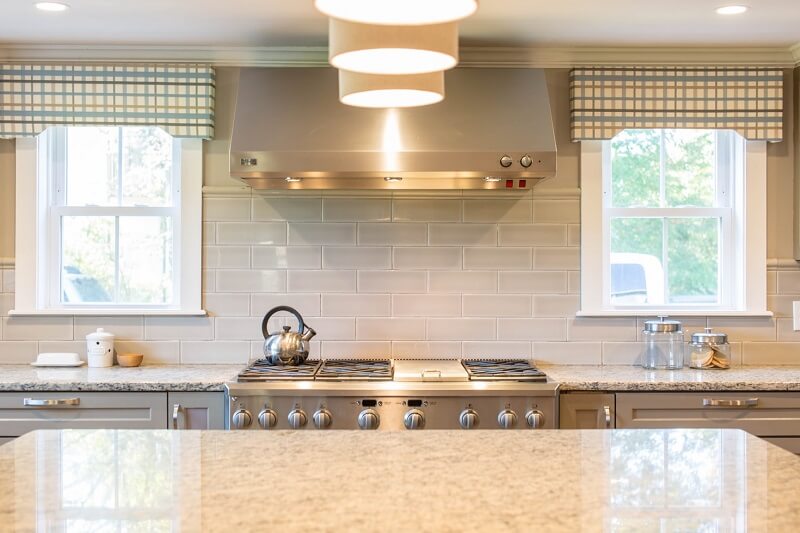
3. Metal (Offers High Strength and Durability)
Metal tables are durable, sturdy and have been used for ages for commercial use in restaurants. Metallic tabletops, due to their high tensile strength and stain-resistant properties, are suitable for family restaurants. If you wish to create a contemporary or trendy industrial look in your restaurant, metallic tables are a perfect choice.
4. Resin (All Weather Restaurant Tables)
Resin is a high-performance material made by combining specific woods and resins under heat and pressure. Cost-effective Resin table tops are synthetic materials that mimic the look and feel of any organic materials. These versatile, all-weather restaurant tables are built to last and are becoming popular these days. Contrary to wooden tables, resin tables are durable and require low maintenance.
5. Laminate (Dark Walnut, Traditional Mahogany)
Laminate tabletops contain synthetic materials and look like natural wood. Made by sandwiching multiple layers of PVC, melamine, and wooden grain finishing, laminate is the perfect material for affordable and durable commercial furniture. The availability of hundreds of design options gives you sufficient room for customization.
6. Glass (Look Premium and Easy to Maintain)
Glass restaurant tables bring sophistication and elegance to your dining room. They look premium, modern, and are easy to clean. Moreover, glass tables usually have metallic or wooden table frames that provide a minimalist look and a powerful first impression. The stylish, timeless design of glass tabletops makes them stand out in any restaurant theme to catch your guest’s attention.
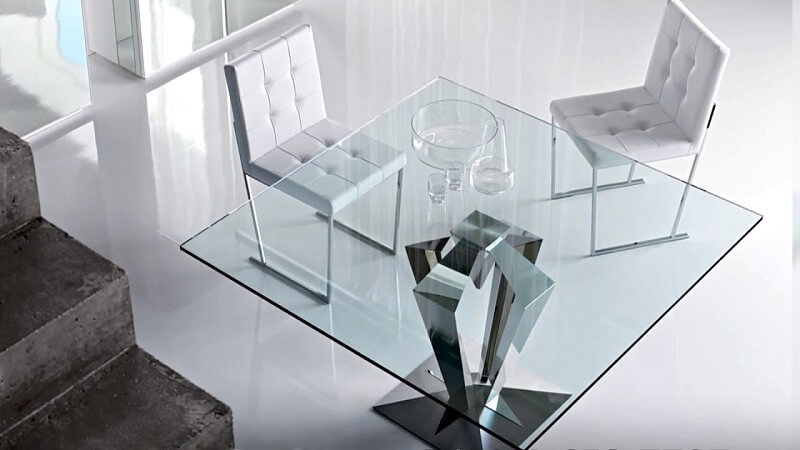
7. Quartz (In Many Colors, Pattern and Design)
Quartz is a relatively new material for tabletops, and its manufacturing process involves combining ground quartz with coolants and resins under high temperatures and pressure. Since quartz is an engineered product, it is available in many colors, patterns, and design options. Also, it is possible to fine-tune the appearance and properties of quartz. Non-porous, rich in appearance, durable, quartz restaurant tables with metal bases are the go to choice for any setup.
What Are The Standard Restaurant Table Sizes And Dimensions?
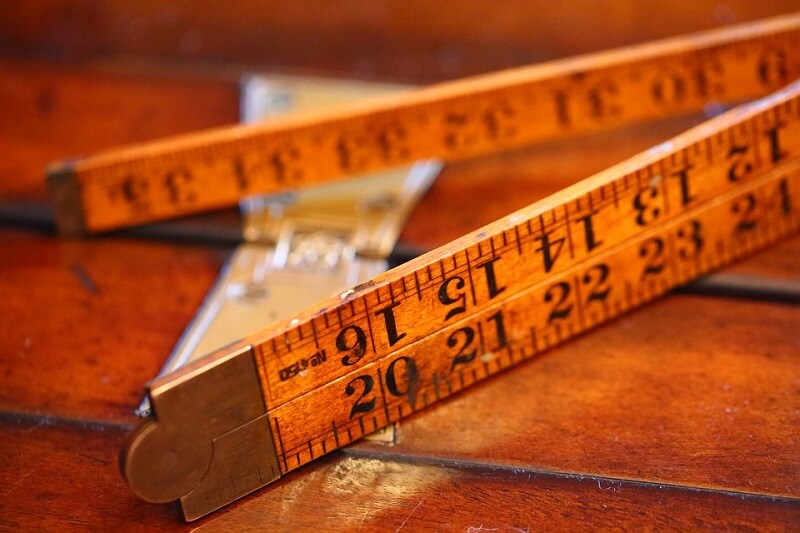
The standard table sizes depend on the type, layout, and table-capacity of the restaurants. For example, a fine dining restaurant will require more table space per diner than a fast-food restaurant. Similarly, the location of kitchen and utility areas demands you to leave more gaps. As an industry-standard practice, you should leave at least 300 square inches of table room per diner. Here are the typical restaurant table dimensions according to the seating capacity for different shapes:
| Seating Capacity | Square Table Dimensions | Rectangular Table Dimensions | Round Table Dimensions (Diameter) |
| Two Persons | 24” X 24” | 24” X 30” | 30” |
| Two to Four Persons | 30” X 30” | 42” X 30” | 36” |
| Four to Six Persons | 42” X 42” | 60” X 30” | 48”-54” |
| Eight Persons | 48” X 48” | 72” X 30” | 60” |
How to arrange restaurant tables?
Your restaurant type determines its furniture, theme, layout, menu, food prices, etc. While arranging the restaurant tables in your dining room, you must consider the type of service you provide and your customers’ expectations. Laying out restaurant tables requires you to make a tradeoff between seating capacity and comfort. A good rule of thumb is to leave at least a 24-inch gap between two tables.
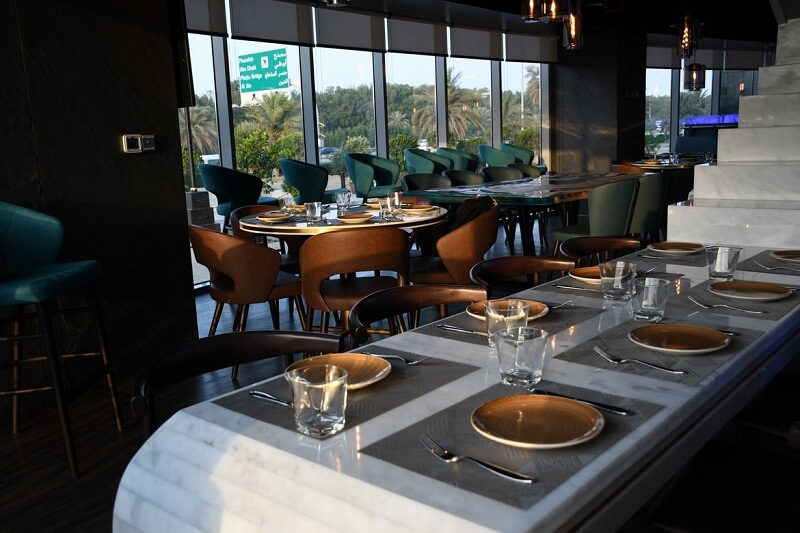
Here are some common characteristics of typical food service styles to decide the perfect layout and concept for your restaurant:
- Fine Dining: The luxurious dining room typically consists of sturdy wooden dining tables with cushioned chairs. Some fine dining restaurants use bars that double as a waiting area.
- Steakhouse: Another upscale restaurant type, steakhouses usually have a rustic theme and layout. Generally, wooden tables, comfortable chairs or booths, and bricks are the main design elements.
- Family Dining Restaurants: Family dining or casual restaurants witness high traffic and require low-maintenance furniture that is easy to clean. Typical restaurant furniture for such setup includes resin or reversible tables with vinyl-cushioned chairs or booths.
- Fast Food Restaurant: Fast food joints and casual dining restaurants are famous for quick service at affordable prices. The restaurant layout is minimalist and consists of reversible laminate tables with metal chairs.
How To Clean And Sanitize Restaurant Tables?
The ongoing Covid-19 pandemic has stressed the requirement of hygiene. To win back the trust of your customers, you must provide a safe dining experience. So, what is the difference between cleaning and sanitizing? Cleaning is merely removing the dust or leftover food particles as you prepare the table for the next customer. Sanitizing, on the other hand, is protecting your guests and staff from germs by killing pathogens. Follow these steps to clean and sanitize your restaurant tables:
- Clean the tabletop with a soap solution and moist cloth to remove all the food particles or stains.
- Dry the surface with a paper towel or microfiber cloth.
- Spray a disinfectant solution on the tabletop.
- Leave the spray for 4-5 minutes, and wipe the wet areas using a microfiber cloth.
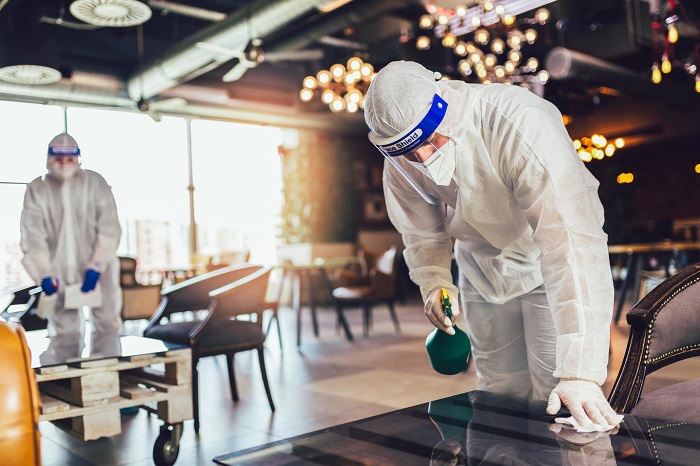
Such a short sanitizing regime ensures your guests and staff are safe. Before trying a new disinfectant directly on your furniture or cushion, perform a spot test to check for the product’s compatibility.
How to Assemble Restaurant Tables?
Restaurant tables usually come in two parts- table bases and tabletops. Assembling the restaurant tables is a relatively simple task. With the right set of mechanical tools and equipment, assembling a table only requires few minutes. When you purchase a restaurant table from a reputed and well-established supplier, many table options all the drill holes and markings or instructions. Alternately, you can grab a drill machine set, a screwdriver set, and basic tools like measuring tape, pencil, screws, etc., and assemble it yourself.
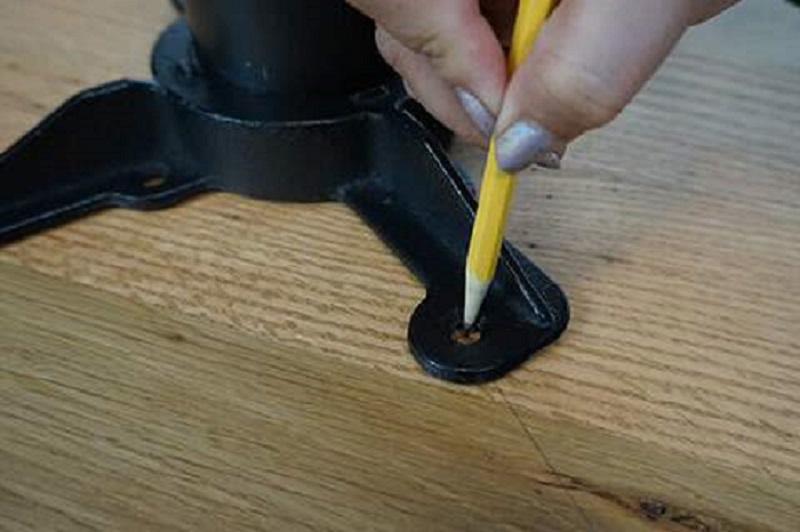
Where to buy restaurant tables?
At Missouri Table & Chair, we build restaurant tables that offer durability and quality at the most competitive prices in the commercial furniture industry. All our modern restaurant tables feature our one-of-a-kind customer service, tailored to each client. With over 30 years of experience in commercial restaurant furniture, we understand the hospitality industry, what customers want, and how to make your establishment more profitable with the right look. With our durable, attractive, and best-in-segment products that withstand harsh commercial conditions, you get complete peace of mind.


